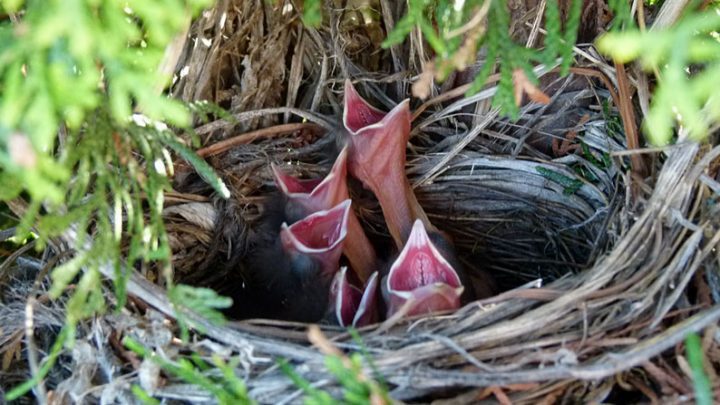What’s the Best Way to Watch a Nest Without Disturbing the Parents or Chicks?

Observing nesting birds is a great way to deepen your understanding and appreciation of the complex and fascinating lives of these animals. But nest monitoring needs to be done safely. The Cornell Lab’s NestWatch project offers the following advice about how to monitor a nest safely:
- Do not check in the early morning. Most birds lay their eggs in the morning so plan on visiting nests in the afternoon. Also, most adults will temporarily leave the nest when you are near, and eggs and young nestlings can become cold quickly if left alone in the morning.
- Avoid disturbing nests during the first few days of incubation. If necessary, observe nests from a distance and approach only when the female leaves the nest.
- Do not approach nests when young are close to fledging. If the young are disturbed during this stage, they may leave the nest prematurely. Young that fledge prematurely usually do not stay in the nest despite attempts to return them, and may not survive. When young birds are old enough that they are fully feathered and alert, that’s a sign it’s time to observe the nest from a distance.
- Avoid disturbing nests during bad weather as this can stress the birds. If it is cold, damp, or rainy, postpone checking nests until another day.
- Do not check nests at or after dusk, when females are returning, or have returned, to the nest for the night. The exception to this would be owls, which typically leave the nest at dusk.
- Be careful of attracting nest predators. Whenever possible take a different route away from the nest site than the route you took to reach it. Walking back and forth to the nest along the same path leaves a dead-end trail that can lead predators directly to the nest.
- Don’t touch the birds. In most instances it is illegal for you to touch or otherwise physically disturb an active nest or its contents.
If you have found a nest, why not consider monitoring it for NestWatch? NestWatch participants enter data into a centralized database that is used to help scientists learn more about nesting birds and bird populations. You can review the Nest Watching Manual to learn more. This is a fun way to enjoy birds and to contribute to our understanding of their ecology.

All About Birds
is a free resource
Available for everyone,
funded by donors like you
American Kestrel by Blair Dudeck / Macaulay Library
